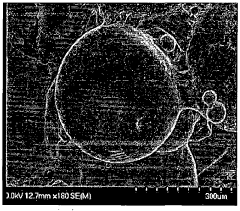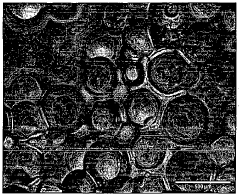Application Of Phase Change Materials (PCMs) For Thermal Energy Storage - Eureka
OCT 9, 20244 MIN READ
Generate Your Research Report Instantly with AI Agent
Patsnap Eureka helps you evaluate technical feasibility & market potential.
PCM Technology Background and Objectives
The primary objective is to provide a comprehensive overview of the development history and technological evolution trends in the field of phase change materials (PCMs) for thermal energy storage. This section will delve into the key milestones and breakthroughs that have shaped the progress of PCM technology, shedding light on the driving forces behind its advancements. Additionally, it will clearly define the expected technological goals and targets to be achieved through the application of PCMs in thermal energy storage systems.
By examining the historical context and tracing the technological trajectory, this section aims to establish a solid foundation for understanding the current state and future potential of PCM technology in the realm of thermal energy storage. It will serve as a crucial starting point for the subsequent sections of the technology research report, providing the necessary background and context for further analysis and exploration.
By examining the historical context and tracing the technological trajectory, this section aims to establish a solid foundation for understanding the current state and future potential of PCM technology in the realm of thermal energy storage. It will serve as a crucial starting point for the subsequent sections of the technology research report, providing the necessary background and context for further analysis and exploration.
Market Demand for Thermal Energy Storage
- Growing Demand for Thermal Energy Storage
- Rising energy consumption and need for efficient energy management
- Increasing adoption of renewable energy sources like solar and wind
- Demand for thermal energy storage in buildings, industrial processes, and transportation
- Market Drivers and Opportunities
- Government policies and incentives for energy-efficient technologies
- Increasing focus on sustainable and eco-friendly solutions
- Potential for cost savings and improved energy efficiency
- Key Application Areas
- Building heating and cooling systems
- Industrial processes requiring thermal energy storage
- Thermal management in electric vehicles and electronics
- Market Segmentation and Trends
- Segmentation by application (residential, commercial, industrial)
- Segmentation by technology (sensible, latent, thermochemical)
- Emerging trends in integration with renewable energy systems
Current State and Challenges of PCM Technology
- Current Technological Landscape
Comprehensive overview of PCM technology development globally, highlighting key milestones and advancements. - Technical Challenges
Identification of major technical hurdles hindering widespread PCM adoption, such as low thermal conductivity, phase segregation, and supercooling. - Geographical Distribution
Analysis of regional hotspots for PCM research and development, noting leading institutions and companies driving innovation.
Existing PCM Thermal Storage Solutions
01 PCMs for Thermal Energy Storage
PCMs store and release thermal energy during phase transitions, used in building systems, solar energy systems, and thermal management.- Phase Change Materials (PCMs) for Thermal Energy Storage: PCMs store and release thermal energy during phase transitions, typically between solid and liquid states, enabling efficient energy management and temperature regulation.
- Encapsulated PCMs: Encapsulating PCMs within protective shells enhances stability, durability, heat transfer, and prevents leakage during phase transitions.
- Composite PCMs: Combining PCMs with nanoparticles, polymers, or porous media improves thermal conductivity, mechanical properties, and overall performance.
- Building and Automotive Applications: PCMs are integrated into building components and automotive systems for thermal energy storage and temperature regulation.
- Solar and Renewable Energy Integration: PCMs are employed in solar and renewable energy systems to store excess thermal energy for later use, enhancing efficiency and reliability.
02 Composite PCMs and Encapsulation
Incorporating PCMs into supporting materials or encapsulating them improves thermal and mechanical properties, preventing leakage.Expand Specific Solutions03 PCM Integration in Thermal Management
PCMs are integrated into thermal management systems for applications like electric vehicles, buildings, and energy storage, utilizing latent heat storage.Expand Specific Solutions04 PCM Synthesis and Preparation
Various methods are employed for PCM synthesis and preparation, including chemical synthesis, encapsulation, and incorporating additives or supporting materials.Expand Specific Solutions05 Novel PCM Compositions and Applications
Researchers explore novel PCM compositions, such as bio-based, solid-solid, and tunable transition temperatures, for specific applications and improved efficiency.Expand Specific Solutions
Key Players in PCM and Thermal Storage Industry
The application of phase change materials (PCMs) for thermal energy storage is a growing industry driven by the demand for efficient energy solutions. Key players include established companies like DuPont de Nemours, Inc., PureTemp.com, and China Petroleum & Chemical Corp., as well as research institutions like the University of South Florida and the Chinese Academy of Science Guanzhou Energy Research Institute. These entities contribute to ongoing innovation and advancements in the field.
PureTemp.com
Technical Solution: PureTemp.com specializes in renewable source-based PCMs for thermal regulation in HVAC, electronics cooling, and thermal packaging.
Strength: Renewable sources. Weakness: Limited applications.
DuPont de Nemours, Inc.
Technical Solution: DuPont offers high thermal conductivity and durable PCMs integrated into building materials for energy efficiency and thermal comfort.
Strength: High conductivity and durability. Weakness: Higher cost.
Core Innovations in PCM Technology
A novel thermal refrigeration energy storage system
PatentPendingIN202141038610A
Innovation
- Exploring salt hydrates as phase change materials (PCMs) due to their high energy storage density, rational price, multiple sources and relatively good thermal conductivity.
- Investigating the properties, defects, and potential solutions of salt hydrates PCMs for thermal energy storage applications.
- Identifying suitable features of salt hydrates PCMs for specific applications.
Environmental Impact of PCM Applications
Phase change materials (PCMs) have gained significant attention for thermal energy storage applications due to their high energy storage density and ability to store and release energy at nearly constant temperatures. The research on PCMs for thermal energy storage aims to develop efficient and cost-effective solutions for various applications, including building heating and cooling, solar energy systems, and industrial processes.
The market demand for PCM-based thermal energy storage systems is driven by the growing need for energy efficiency, renewable energy integration, and thermal management solutions. The potential market spans across residential, commercial, and industrial sectors, with applications in HVAC systems, solar thermal systems, and industrial processes requiring thermal management.
Current research efforts focus on addressing challenges such as improving the thermal conductivity of PCMs, enhancing their cycling stability, and developing encapsulation techniques for effective heat transfer. Researchers are exploring various PCM materials, including organic and inorganic compounds, as well as composite materials, to optimize their properties for specific applications.
Potential innovative directions in PCM research include the development of advanced composite materials with enhanced thermal conductivity, the exploration of phase change slurries for improved heat transfer, and the integration of PCMs with emerging technologies such as phase change foams and phase change coatings. Additionally, the development of cost-effective and scalable encapsulation techniques is crucial for the widespread adoption of PCM-based thermal energy storage systems.
Regulatory and Policy Considerations for PCM Use
Phase change materials (PCMs) have gained significant attention for thermal energy storage applications due to their high energy storage density and ability to store and release energy at nearly constant temperatures. The research on PCMs for thermal energy storage aims to develop efficient and cost-effective solutions for various applications, including building heating and cooling, industrial waste heat recovery, and thermal management in electronics.
The market demand for PCM-based thermal energy storage systems is driven by the increasing need for energy efficiency, renewable energy integration, and thermal management solutions across various industries. The potential market size is substantial, encompassing residential and commercial buildings, industrial processes, and emerging technologies such as electric vehicles and data centers.
Unlock deeper insights with Patsnap Eureka Quick Research — get a full tech report to explore trends and direct your research. Try now!
Generate Your Research Report Instantly with AI Agent
Supercharge your innovation with Patsnap Eureka AI Agent Platform!



